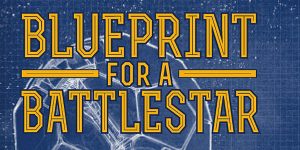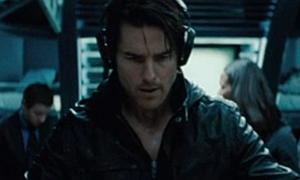The 6 most important experiments in the world (excerpted from Discover Magazine — December 2007), and what they mean to the world of Science Fiction.
An ongoing project aimed at reverse engineering the function of mammalian brains. The project is named for IBM’s contribution of the computing power necessary to crunch to the tremendous amount of data. Of interest to sci-fi fans is the potential for achieving consciousness in a computer. Henry Markram, project leader, isn’t counting on it, but the final product will be closely watched for sign of unique outputs from identical inputs. “If consciousness emerges, we’ll be able to study it systematically and understand exactly how it emerges.”
OK, that just seems like a recipe for 1) the eventual rise of the machines, and 2) said machines being pissed off at being studied. Is this the first step toward the eventual demise of the human race at the hand of cognizant machines? Perhaps in conjunction with this effort, humanity needs to consider the ethical implication of dealing with non-human consciousness. Should consciousness arise (an extremely unlikely possibility), does it have any rights under current laws?
As an offshoot, one might ponder the same question with relation to any aliens who may come visiting. Would aliens (true aliens, as in extraterrestrial) have any of the rights commonly granted to humans? While at first glance one might think so, there are specific descriptors for subjects to which laws (and rights) apply, and those descriptors relate only to humans.
The EARTHTIME project is an international effort with the focus of improving the calibration of earth history. The aim is to consolidate and standardize measurements so as to get an accurate timescale for important events in Earth’s past. The effort to date has resulted in the narrowing of the error margin in dating deep time objects from a few million years to less than 100,000 years. Time travel of sorts will be achieved next year, with plans to drill on the floor of the Pacific Ocean and extract cores spanning the period from 53 million to 18 million years ago.
No immediate significance to the sci-fi community in this effort, with the possible exception of the drilling awakening some sort of Godzilla-like creature; or perhaps sleeping dragons. Then again, given the amazing ability of viruses to survive for long periods of time, humanity will unearth the vehicle of their demise in the form of an ancient pathogen. Scott Sigler is probably already well along in yet another effort detailing the thinning of the human herd.
3) Planted Forest Project
This ambitious project attempts to balance the needs of humans and wildlife, the desire for economic development, and the use of land by indigenous people. It aims to do all that and maintain the biological diversity of forest species. The basic idea is to have a network of undisturbed patches of forest connected by wildlife corridors, thus providing the means for species to maintain genetic diversity, while allowing for significant commercial and human utilization of the remaining land.
There is little opportunity here for promising Sci-Fi application. Ecology related plots invariably deal with doom and destruction, usually brought about by our desire to destroy that which we love (Hollywood plot, not my view of humanity). But there is little appeal for a potential success story. Still, the idea of two vastly different world coexisting in close proximity might spur the imagination of some writers. One obvious plot is that of a modern day Tarzan. Perhaps the landscape lends itself to a secret identity Tarzan-like character; a meek IT geek whose mundane existence belies his true identity of a powerful forest lord, with dominion over plants and animals … but who still can’t get a date. With his trusty sidekick, an outcast Lemur, he roams the two worlds he inhabits, solving hardware drivers compatibility issues in one, and handing out forest justice in the other.
This is the effort to record the moment when a bit of dark matter (WIMP: weakly interacting massive particle) smacks into the nucleous of an atom of liquid xenon. The event would be recorded for study, with results helping to advance our understanding of the universe and the laws that govern it. Dark matter is theorized to be six times more abundant than the atomic matter making up the ordinary world.
Physics is our best chance to ever achieve the cool things we see in Sci-Fi movies, and read about in sci-fi books. Understanding of our physical universe is crucial if humanity is ever to circumvent the bounds that govern it. These experiments are less exiting than UFO stories, but are much more likely to one day have humanity venture into the black, riding a Firefly class transport to distant world, finding romance, intrigue, and spare change along the way.
This effort aims to catalog all see life: plants, animals, bacteria, and fungi. Seven years into the ten year study, 5,300 previously unknown organisms have been identified, wit every new one logged into the Ocean Biog-eographic Information System (https://obis.org/). The current effort is focused in discovery, but at the end of the ten-year study, the next step will be to determine what relationship these organisms have to the oceans, and earth, ecosystems.
Dark waters have long been the source of fertile imaginations. Giant sea monsters, underwater civilizations, mermaids, aqua-man — all have fed our hunger for the mysterious. At first glance it may seem such an ambitious effort of discovery is aimed squarely as destroying the mystery. Perhaps one day, in the distant future, the oceans will give up their last secrets. But for right now, one can hope this effort will fuel the imagination of future writers, and ignite interest rivaling that of space exploration — all it would take is one mermaid.
Craig Venter is reportedly poised to announce he and his research team have constructed a synthetic chromosome, giving rise to an artificial life form. He hopes to have the first artificial species within the next few months. This would open up the field of genetic engineering, making it possible to build life from the ground up, assembling desired organisms adapted to a multitude of tasks, from cleaning up pollution, to fighting global warming. Given that the science behind Venter’s work is getting cheaper every day, some theorize some day people will be able to duplicate his work in their garage.
Now this, this is the stuff of sci-fi. The very idea of thousands, millions, of people –pseudo-Frankensteins, if you would — in garages all over the world is staggering. More disciplined efforts may result in organisms derived from copying, and mixing, genetic traits from different species. The idea of an army of synthetic clones is not outside the realm of possibility, needing only a cloaked, creepy figure to bring the prophecy to life. The Blob is also a distinct possibility. A synthetic life experiment run amuck may be coming to a theater near you soon… literally.
The following author’s works were cited for this news article:
We encourage our readers to investigate their work. They are all a fascinating study into the great possibilities for humankind’s future.
The Blue Brain Project by Susan Kruglinski
The EarthTime Project Erika Check Hayden
Planted Forest Project by Jennifer Barone
Dark Matter Experiment by Guy Gugliotta
The Census of Marine Life by Jennifer Barrone
Artificial Life by Carl Zimmer





I thoroughly enjoy Mr. D’alise’s articles. Why so few?
Great article.
Every single one of those made me go “ooooh . . . “
G. Jetson had button finger but I have mouse shoulder. How many things that start off just SciFi are shades of what is to come. There seems to be a string of truth in so many of the future projections especially when tied to real science. Enjoyed reading your perspective Emilio!